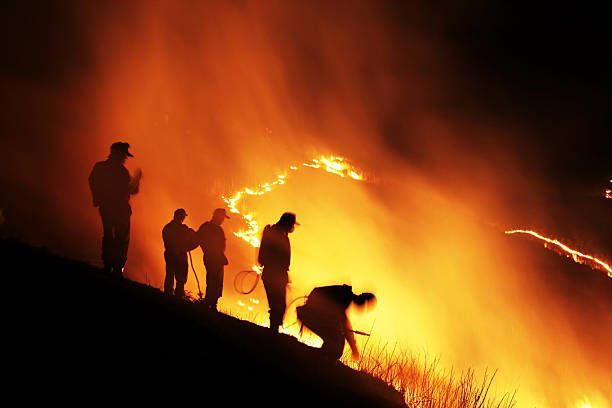Pyrocene by Stephen J. Pyne
Humanity as a "Fire Creature"

Stephen J. Pyne's The Pyrocene: How We Created an Age of Fire, and What Happens Next offers a compelling exploration of humanity's deep relationship with fire and its transformative impact on Earth. Pyne argues that fire is humanity's defining ecological signature, shaping our evolution, societies, and even the planet itself. He introduces the concept of the "Pyrocene," a fire-driven epoch analogous to the Ice Ages, marked by humanity's unprecedented ability to manipulate fire on a global scale.
Key Themes and Insights:
- Humanity as a "Fire Creature": Pyne traces how humans evolved alongside fire, using it for cooking food, managing landscapes, and driving technological progress. Early human fire use was constrained by ecological limits, but the Industrial Revolution's "Pyric Transition" unleashed fossil fuel combustion, fundamentally altering Earth's fire regimes and climate124.
- The Pyrocene Epoch: The book redefines the Anthropocene through a fire-centric lens. By burning fossil biomass (coal, oil, gas), humanity has created a "combustion cascade," disrupting natural fire cycles and contributing to climate change. This shift has globalized fire's effects, creating an era dominated by megafires and ecological imbalance346.
- Living with Fire: Pyne emphasizes that fire is not inherently destructive but requires careful stewardship. Indigenous practices historically maintained ecological balance through controlled burns. He advocates for restoring such strategies to coexist with fire in a warming world where wildfires are becoming more frequent and intense16.
Relevance to Modern Humans:
The Pyrocene underscores the critical role of understanding and managing fire in forest ecosystems. Healthy forests depend on periodic fires to clear underbrush, recycle nutrients, and promote biodiversity. Modern wildfire suppression has disrupted these cycles, leading to fuel accumulation and catastrophic fires. Adopting sustainable practices that align with natural fire regimes can help protect both forests and communities.
Pyne’s work is a call to action for rethinking our relationship with fire—not as an enemy but as a force to be managed responsibly. This perspective is essential for anyone working in forestry or environmental care which many more of us may need do, in an era increasingly defined by fire.
Practical Approaches for society and institutions moving forward:
- Proactive Fire Management: This strategy focuses on modifying landscapes to promote desired fires and contain unwanted ones1. It involves:
- Hardening houses in wildland-urban interfaces to reduce fire risk.
- Calculated thinning and prescribed burning to manage fuel loads.
- Collaborative projects between public and private entities.
- Reactive Fire Management: This approach accepts existing fire landscapes and tries to derive benefits from them1. It includes:
- Rapid attack and suppression where necessary.
- Point protection and fallback to community borders.
- Big-box approach using defensible fuel breaks and burnouts.
- Indigenous Fire Stewardship: Pyne acknowledges the importance of reviving traditional land management practices24:
- Cultural burning to clear underbrush and promote new growth.
- Regular, low-intensity fires to cycle nutrients and maintain ecosystem health.
- Collaboration with indigenous communities to integrate traditional knowledge.
Adaptive Management: Pyne suggests a more flexible approach to fire management5:
- Moving away from a single-agency, suppression-only policy.
- Adopting a pluralistic strategy that integrates fire into land management.
- Balancing fire suppression with controlled burns and ecosystem needs.
Cost-Effective Solutions: Implementing more efficient fire management strategies4:
- Training and equipping Indigenous fire guardians.
- Leveraging local expertise and land knowledge.
- Reducing reliance on expensive and toxic aerial firefighting methods.
- Ecosystem-Specific Approaches: Tailoring fire management to specific ecosystems2:
- Understanding the fire ecology of different landscapes (e.g., oak woodlands).
- Using fire to promote native species and maintain biodiversity.
- Considering historical fire regimes when planning management strategies.
By adopting these approaches, society and institutions can work towards a more balanced and effective fire management strategy that respects ecological needs, incorporates traditional knowledge, and one that not only protects but also builds communities.






